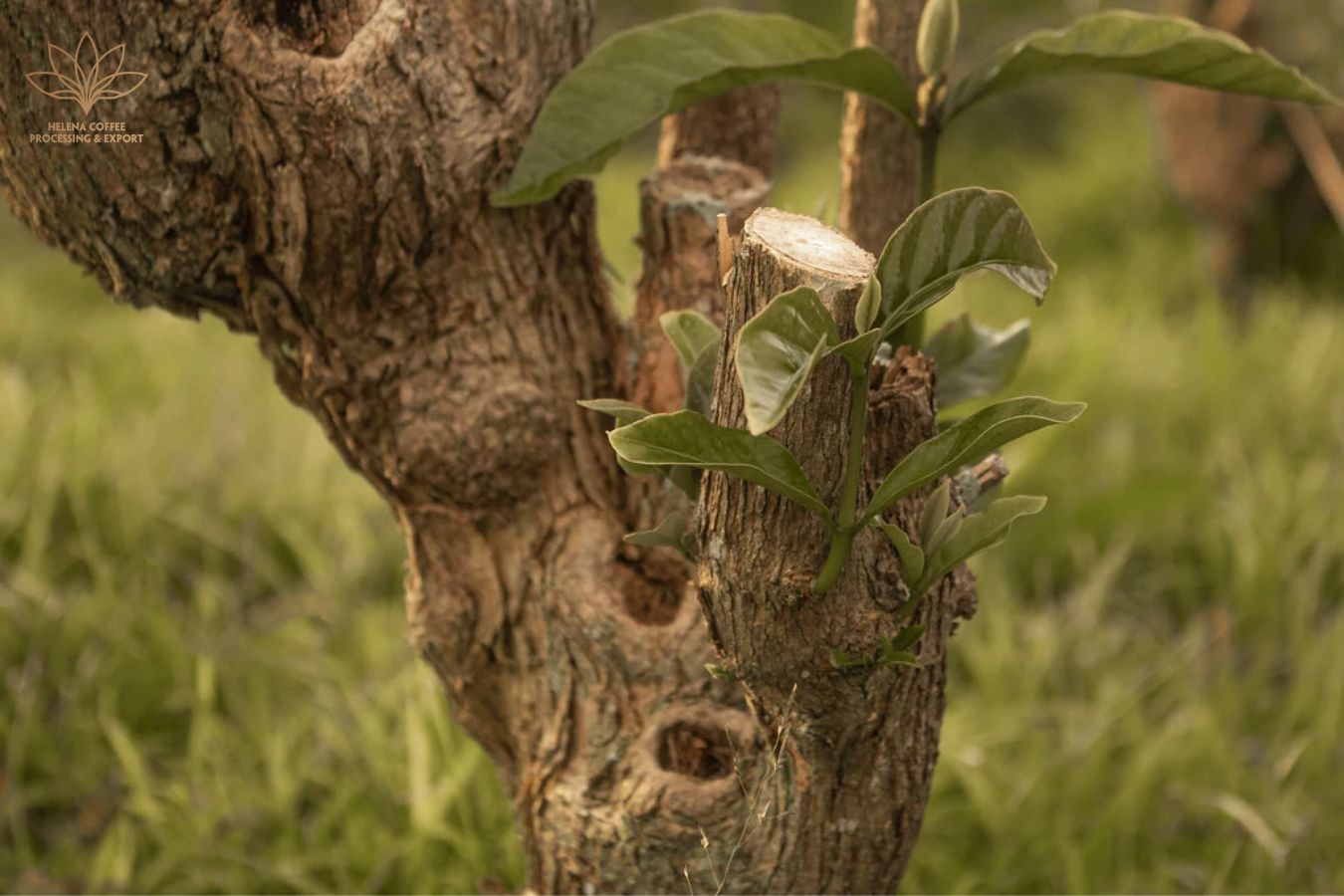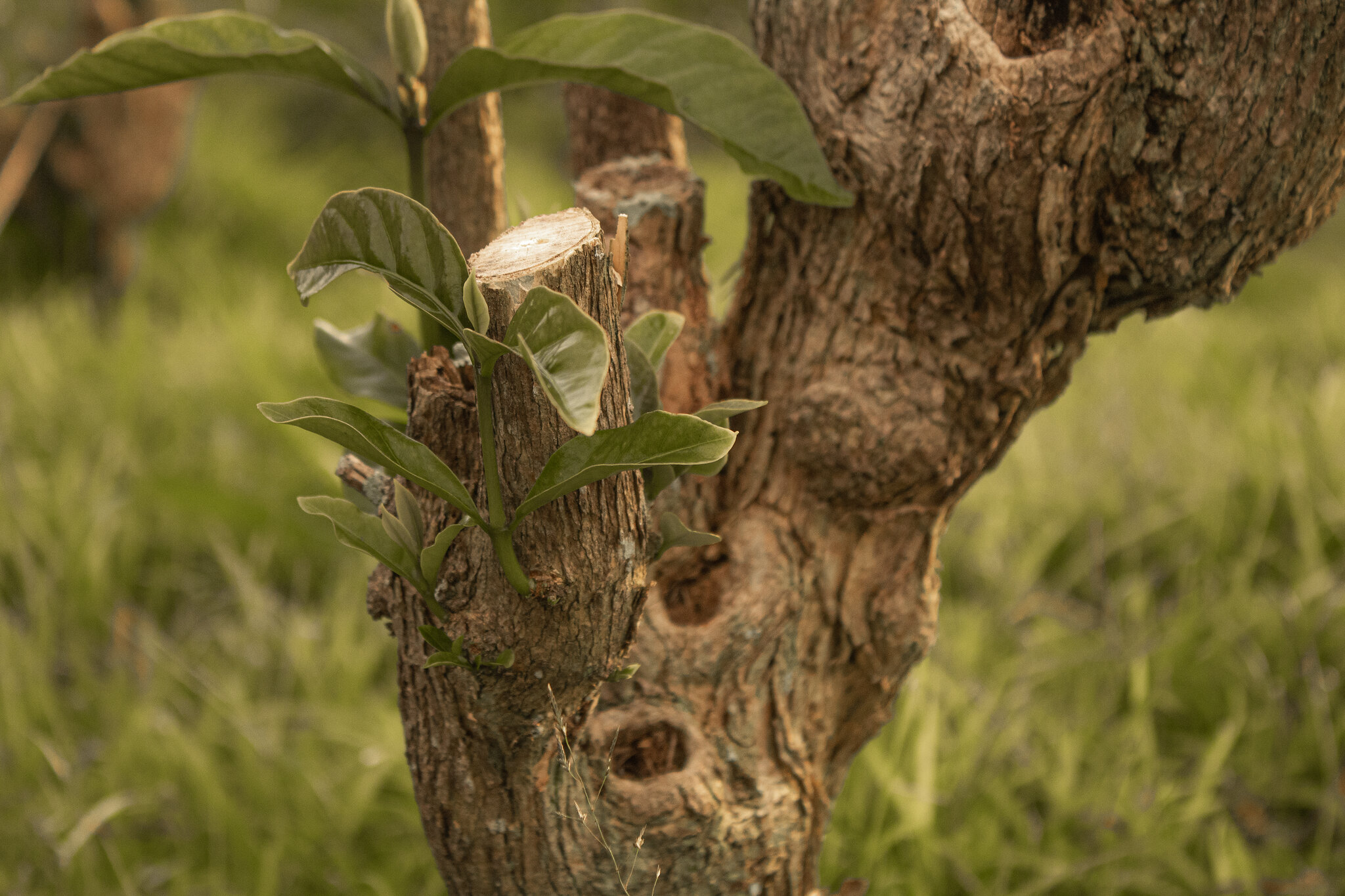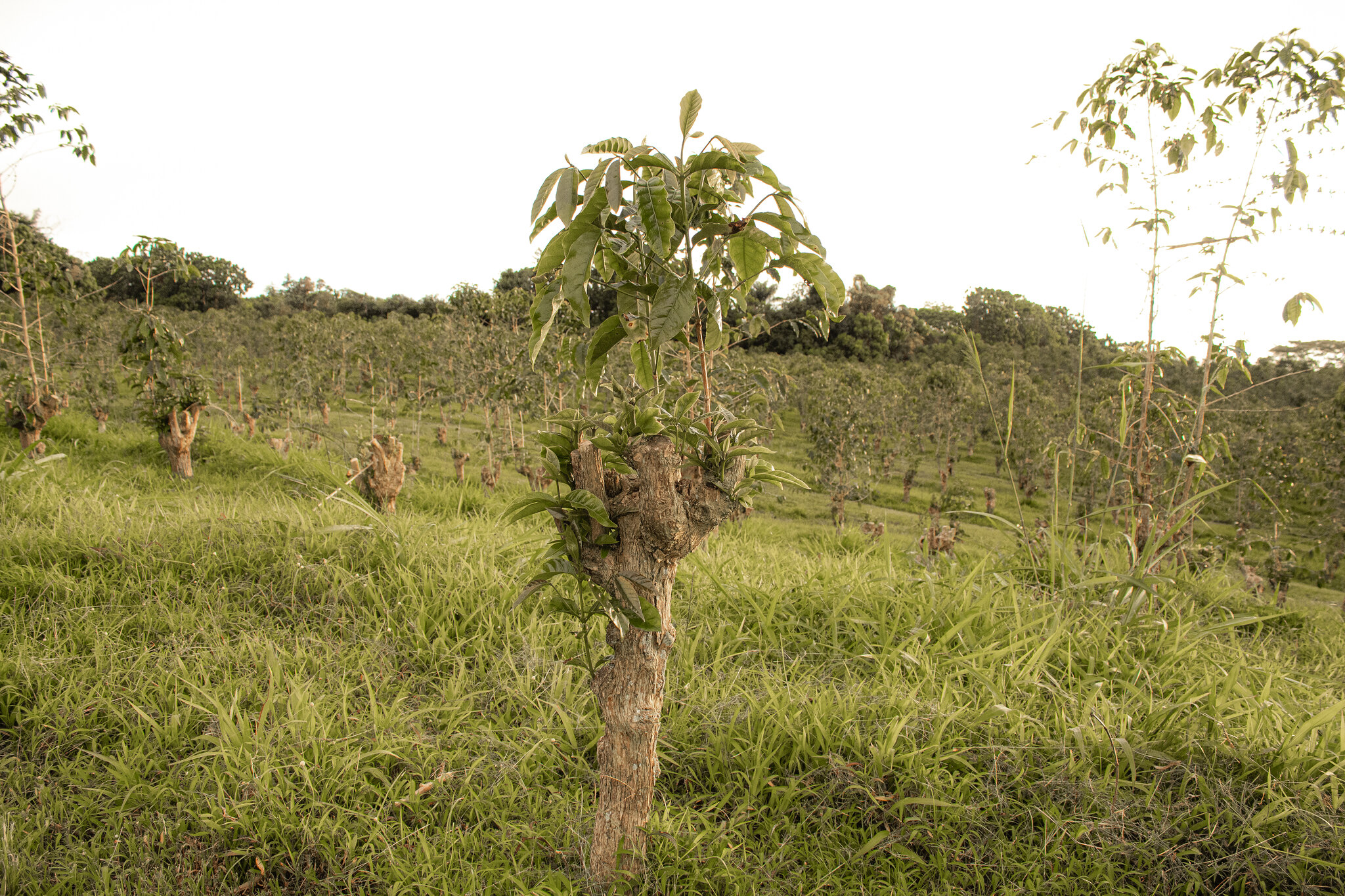
Coffee Farming: Pruning Techniques, Shaping Coffee Trees – Whole Farming is a particular column from Helena Coffee Vietnam that provides an overview of what you cancontrolntandlhoundsw to exercise what contact rolls you can use to create a sustainable crop and a good cup of coffee.
Pruning is the selective removal of part of a coffee plant, including branches, shoots, flowers, and fruits. Pruning can control the size of the canopy to make harvesting easier, encourage yield growth, protect against drought and disease, and ultimately improve yields.

Pruning is one of the essential farming measures to achieve yields and keep plants healthy. Most existing research suggests the pruning comes from Kona, Hawaii — probably the highest product of Arabica coffee per acre anywhere in the world.
This comes partly from ideal growing c farming as applied farming methods, including strict and regular pruning standards.
This post is made to help you understand the basic tenets of shaping and primary and essential pruning purposes.
To apply shaping and pruning techniques for coffee trees in production practices, refer to the guidance “Shaping & Pruning Branches for Coffee Trees” in the “Guide to Sustainable Coffee Production” issued by the Ministry of Agriculture & Rural Development.
Why prune?
Coffee berries usually grow only on new branches. As coffee plants age, growth slounitswith more branches. The components that each fruited become fibrous and obstruct the light.
As a result, the plant becomes less and less productive as it ages. Pruning encourages new growth, reduces self-shading, and thus increases productivity.
Coffee is a hardworking crop that will even focus entirely on yielding for a single crop – or “overbearing.” The tree will bear as much fruit as possible in any given year.
When the fruit begins to bloom and ripen, it uses up the carbohydrate reserves from the plant and needs a large amount of nitrogen from the soil.
If insufficient carbohydrate reserves or enough nitrogen to support growth, the leaves and branches will begin to die when their food supply is used up. This is called dieback; next year, there will be an inferior crop.
Even if the branches do not die completely, the limited amount of carbohydrates accumulated at the time of flowering can affect the number of flowers and the ability to bear fruit and still affect the yield in the following year. So a crop with high yields in one year will cause the plant to use up its carbohydrate reserves and produce lower results the next year.
This cyclical model has the term – “Biennial bearing,” which refers to crops with irregular yields from year to year. Good pruning can eliminate this, resulting in more stable outcomes from year to year and healthier plants.
Horizontal branches
Grows obliquely relative to the main stem, capable of fruit; there are two different types of branches:
Basal branches (level 1 branches): There are many sleeping sprouts at each axillary leaf on the main stem, but only the top nodes can develop into horizontal branches called basal branches or level 1 branches.
If a level 1 branch is shed or cut off, then never at that location can another level 1 chapter arise.
Secondary branches (2nd, 3rd level branches …): At each axillary of the 1st level branch, there are many sleeping sprouts capable of developing into level 2 branches or differentiating into flower sprouts when suitable conditions such as dry weather and low temperature.
In the axils of leaves on level 2 branches, many similar dormant sprouts can develop into group 3 extensions.
Horizontal branches from level 2 onwards are collectively referred to as secondary branches. These branches can regenerate, so they should be removed during shaping sessions if they are too many.
Vertical branches (overtaking branches or overshoot shoots)
Are branches arising from the sprouts sleeping in the axils of the leaves on the main stem? Excess nodes have characteristics: erect growth, fast growth, consume a lot of nutrients but are incapable of producing fruit.
During shaping, excess shoots need to be removed regularly and promptly to avoid nutrient consumption, except for the following cases: use extra nodes to form new stems and supplement the canopy when the plant is defective.

Flowering behavior
Coffee flowers only grow on the branches formed from the previous year; very rarely, the flowers come back on the vertebrae that have carried the fruit, so on a coffee branch, there are usually three different branches: the branch segment that is taking the fruit, the branch segment that is carrying the fruit and the newly formed silk branch segment (reserve branch).
If not cut annually, the fruiting position on the branch tends to be farther away from the central trunk axis, and the transport of nutrients is limited, affecting the quality and quantity of fruits in these locations.
The purpose of annual cutting and shaping is to facilitate the development of reserve branches and bring the fruiting position closer to the central stem axis for high yields and improved grain qualities.
Pruning
The coffee tree creates an upright stem with evenly spaced “nodes.” Each node will produce a pair of leaves and a pair of sub-branches (or side branches). As the plant ages, the growth rate begins to slow down, and the nodes will retract closer together.
Along the side branches, each node produces flowers and fruits, usually only a year after it grows.
As the lateral branch grows, it produces new nodes that will bear fruit and sometimes another unit, also known as the “secondary branch.” Secondary components also have fruit but are often less productive.

When the plant’s main trunk is cut off or damaged, longitudinal branches (overpasses) grow out of the box, creating side branches.
This can be harnessed to generate new growth from older trees. However, too many extra departments can limit yields because excess branches do not produce fruit.
So with a healthy coffee tree, the branches are considered nutritional competitors and must be removed.
The branches that have given fruit on the coffee tree will hardly bear fruit in the next year. These branches will stretch out to continue fruiting at the branches’ tips, die dry, or create new secondary additions.
Therefore, after each harvest, farmers must prune branches and reshape coffee trees. Otherwise, coffee trees will have messy foliage, reduce yield in the next year, and quickly age.
Usually, pruning can be carried out twice a year as follows:
- The first time: Immediately after harvesting, the plant needs to prune useless branches, dead, dry branches, pests, and weak small, overgrown secondary branches in the upper part of the canopy. Shorten the old units to focus on nourishment that feeds the secondary components.
- Second time: In the middle of the rainy season (May 6, 7), when the branches have grown lushly again, thin out the secondary branches that grow in an unfavorable position (ingrown into the trunk) so that the canopy grows well and choose to leave strong stems, reserve for the next crop.
- In addition to the two main prunes, the secondary branches (also called “toothpicks” and “vicious” branches) grow very thickly at the same place on the central unit, not contributing to the yield but also competing nutritionally with the branches that will bear fruit, so they should be removed simultaneously with the pruning of the branches from the trunk, root.
The various pruning systems’ goal is to encourage new branch growth, produce yields, and allow the canopy to receive light more evenly.
In summary, the general rule of thumb is to cut off old branches and pests and limit unnecessary secondary components that will significantly improve yields and should be carried out annually after harvest.
Addition of defective canopy
Many plants have an inappropriate shape during care for various reasons such as pest infestation, dry branches due to lack of water, or wind damage. These trees will be additionally shaped as follows:
- In the case of a tree with a canopy underneath (parachute canopy), the top is supplemented by raising a bud that crosses the ground, and this shoot is pinned at a height where the roof is defective. For the overshoot to grow healthy and develop normally, it is necessary to thin out some secondary branches just above the location of the overshoot (Figure 9).
- If the plant has a defect in the canopy above, it is necessary to see off the old, underdeveloped stem above and raise a new shoot to supplement the upper top. The above shaping technique has helped the plant exploit other intensive elements such as fertilizer and watering at a high level. At the same time, this measure also contributes to maintaining the stability of the yield of coffee gardens.
Improved shaping system (hand shaping from limb hump)
“Hand shaping technique with branch hump” meets the urgent requirements of practice, consulting on transferring technical advances in sustainable coffee production programs, certified coffee, and landscape coffee,…
This helps to reduce the technical pressure and labor of coffee shaping, reconcile the technical conflict between single-body and multi-body shaping, integrate the advantages, and overcome the disadvantages of these two shaping methods.

In the system of level branches (2, 3, 4,…), the lower the unit, the more robust, and the higher the department, usually the level 2 branch always shows the strongest The formation and maintenance of level 2 (low-level) bio-tumors will facilitate shaping, enhancing and stabilizing yields. Farmers need to prioritize the creation of level 2 birth humps.
Pruning tops
“Top pruning” refers to the complete cutting of the top of the plant – from the root to about 1.5 – 1.8m, to limit the height of the plant to make harvesting easier.
Once the Arabica tree grows to full height, it will not create any more lateral branches; no primary units mean growth & yield, which must come from the secondary branches – the secondary branches.
This pruning system is relatively simple and requires the farmer to cut off the excess branches, thin the fruit-bearing branches, and remove the old stems.
As the vertical branches age and become no longer effective, they can be cut off completely to allow new overshoot shoots to grow, keeping 2 or 3 overgrown shoots growing on the root tree simultaneously.
Because it is simple and does not require heavy equipment, this is the technique recommended by the FAO in pruning.
However, in countries with more inputs to farming, such as fertilizers and irrigation, and especially where agriculture is mechanized, more selective rigorous pruning techniques may be appropriate.
Tree cutting
‘Tree cutting’ usually refers to completely cutting the tree & retaining only the root. The following year, the plant will produce new overtaking shoots, which increase but do not bear fruit.
The fruit will be born on its lateral shoots in the following years. Although this will result in a loss of productivity in the first year, production that often increases in subsequent years can compensate again.
In addition to batch cutting, there is a method of cutting roots in rows. A row is retained alternately with an original cutting row called the Beaumont-Fukunaga system, developed in the 1950s.
This can be done on a 3- or 4-year annual cycle or every two years on a 6-year cycle. This system is in everyday use in Hawaii and much of Latin America.

Initially, the Beaumont-Fukunaga Method was called ‘stumping’ because it was customary to cut everything on the tree, all the way to the root. Over time, about 5% – 10% of coffee plants will die, needing to be replaced with a new plant.
Some farmers claim the number could be less than 1% if adequately fertilized and cared for. Later, to limit the number of coffee plants that die, leaving a ‘vertical bud’ is expected to ensure they can live, stay healthy, and continue photosynthesis to produce more shoots.
References:
- Primecoffea, Canh tác 09: Kỹ thuật cắt tỉa, tạo hình cây cà phê, Tháng Một 20, 2023.